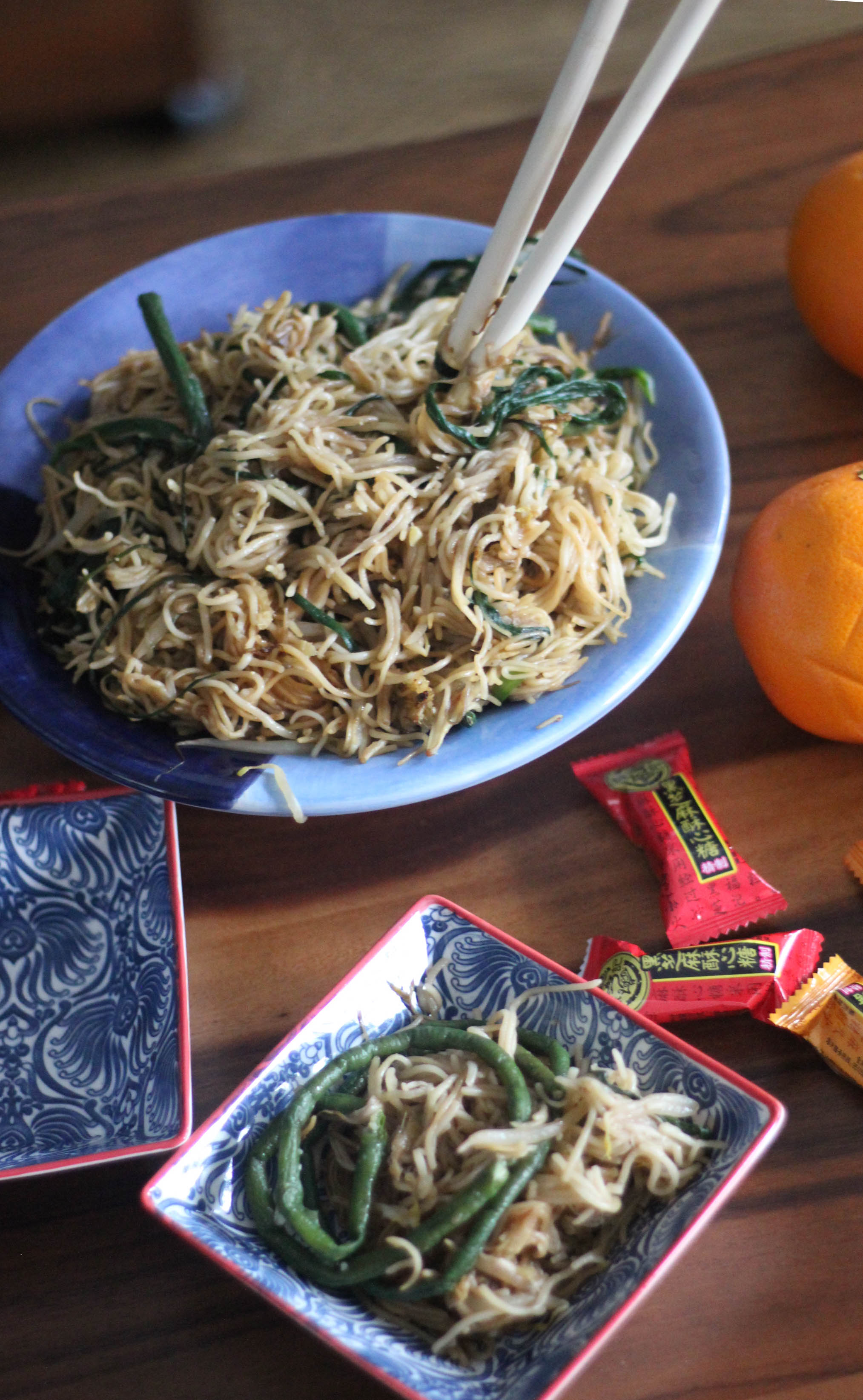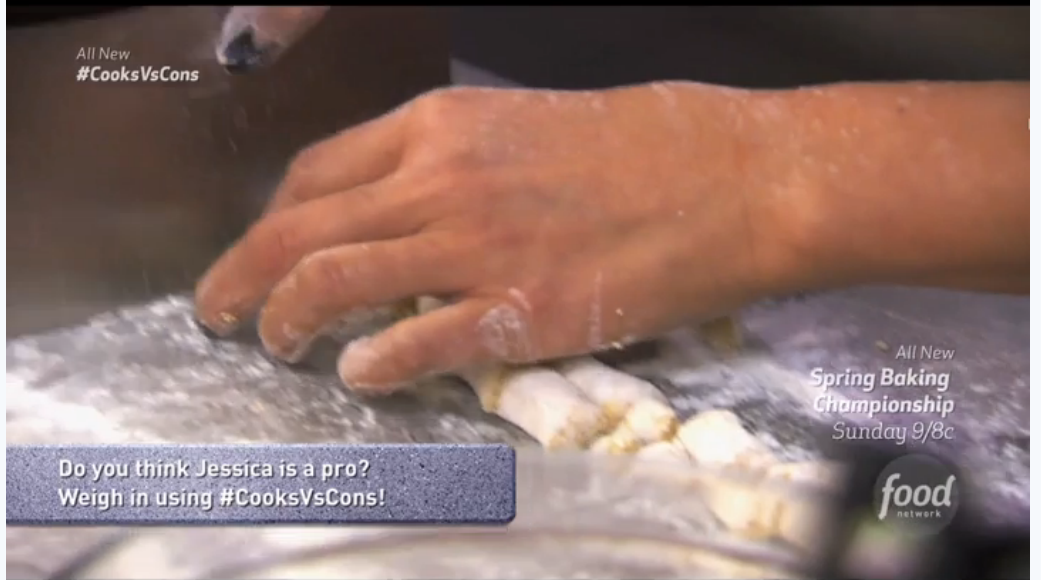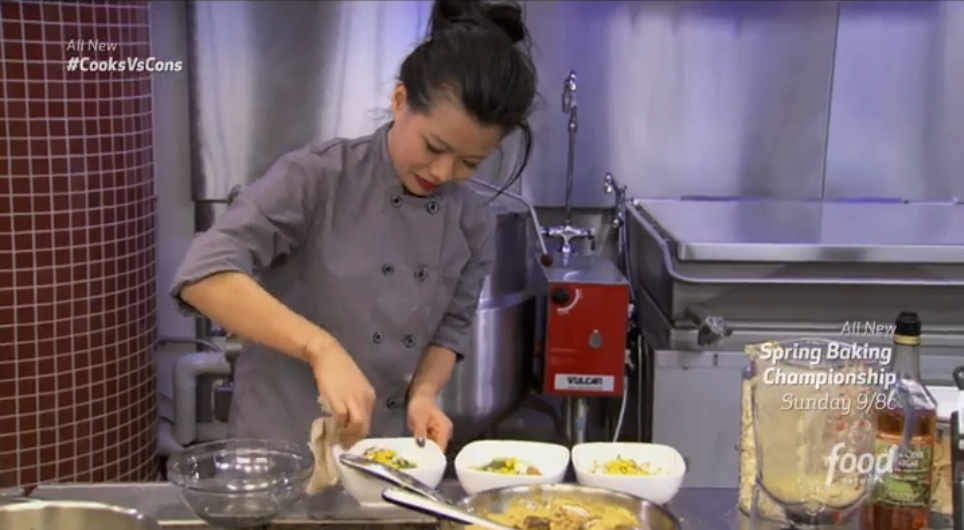We’ve all been there. You get to the farmers market and it’s so beautiful and inspiring and you want this and that and the other. Everything is so gorgeous… but where do you start??
I collabed with Quiddity on a short video on how to shop the farmers market. Here’s my shopping strategy, and how I use my market haul to make a dish.
Purple Bravo Radish — This is my star item and what the dish revolves around
Custom Lettuce Blend - Purple Radish Shoots, Sunflower Shoots, Micro Chrysanthemum, Tatsoi, Micro Mesclun, Miner’s Lettuce, Lamb’s Quarters
Though farmers markets can be a little overwhelming at first, remember that seasonal, local cooking is actually quite easy. If they grow together, they go together. Chances are, crops that come into season around the same time will naturally pair with one another on the plate.
Secondly, the ingredients are so good, you don’t need to do much. The best way to honor your ingredients is to prepare simply and then get out of the way.
And that’s what I did with my spring radish salad with aged Havarti, creamy horseradish dressing, and cru-tons. I left the beautiful lettuces and cheese as-is. I left the bread unadorned and untoasted so you can fully appreciate the texture (and use it to sop up the dressing).
Because this dish was an ode to radish, I showcased it in three different preparations: raw, roasted, and pickled. Roasting brings out the radish’s sweetness and earthiness. Pickling draws out the spiciness. And raw is like the flawless no-makeup selfie — the radish is naturally beautiful thankyouverymuch.
Finally, I made a simple dressing that amplified and unified the flavors already in the salad. This horseradish dressing is creamy (to give heft to the leaves and unify them with the heartier radishes, cheese, and bread), sweet (to balance out the bitterness of the radishes and greens), and spicy (to alert our tastebuds to the subtle spiciness of the spring radish).
You might be tempted to eat this salad with your hands, savoring each ingredient one by one. Do it! That’d be the ultimate way of honoring these great spring offerings.
RECIPE
CREAMY HORSERADISH DRESSING
½ cup buttermilk
½ cup kefir yogurt
¼ cup olive oil
2-4 tablespoons prepared horseradish (depending on how potent your horseradish is)
1 ½ teaspoons honey
½ teaspoon salt
½ teaspoon black pepper
Whisk all ingredients together and drizzle onto salad just before serving.
Lunar New Year Eats - Long, Long Life Noodles
Towards the end of any Chinese banquet -- a wedding, birthday, and most definitely Lunar New Year -- you will get a giant platter of noodles.
You’ll reach for your serving but the noodles won’t stop. They’re long and tangled. You look for a knife, but of course there aren’t any knives at a Chinese banquet table, just chopsticks. Not that your grandma would allow you to cut them. Aiya, do you want to cut your life short?
So you pull and pull and before you know it, your small chopstick pinch turns into an entire plateful.
These noodles aren’t just any noodles, they’re longevity noodles -- uncut and extra long. The long life symbolism and somewhat comical way you eat them got me thinking… what if all the ingredients in Longevity Noodles were long and uncut?
And so I added long beans, flat Chinese chives, enoki mushrooms, and bean sprouts. No stunted peas or diced anything -- we’re looking for length! I gave the veggies a little trim but otherwise kept them at full length.
When it comes to a long life, might as well quintiple down, right?
RECIPE
Note: Stir-fries are easy and very adaptable. All the work is in the prep. Cooking happens in a matter of minutes. The key to stir-frying is to time your ingredients and know how they cook. For example, of all the vegetables in this recipe, only the long beans and Chinese chives sear quickly. The mushrooms and bean sprouts are very watery and will steam before they brown, if they do so at all. So you have to decide what you want to sear and what you want to steam. If you want your ingredients to brown, you may have to cook them in batches so they have room to expel water and brown. Or, you can do as I did and only sear a couple of ingredients, and then add the rest of the watery ingredients to steam all together. This is technically more of a stir-fry/braise, but is equally delicious and a whole lot faster than a true stir-fry.
½ lb longevity noodles (Or any Asian wheat noodle. I like thinner noodles, but they are more prone to breaking which kinda happened here 😬)
1 ½ tbsp oyster sauce
1 ½ tbsp hoisin sauce
3 tbsp soy sauce
½ tsp white pepper
1 tsp sesame oil
1 tbsp grapeseed oil
⅓ lb long beans
½ lb Chinese chives
⅓ lb bean sprouts
⅓ lb enoki mushrooms
Cook noodles according to package instructions. Remove from water when very al dente, since they will continue to cook and absorb water once they’re re-added to the stir-fry. For fresh noodles, this means you could be cooking the noodles for as little as a minute.
Wash, dry, and trim all your vegetables. Mix the oyster sauce, hoisin sauce, soy sauce, white pepper, and sesame oil and set aside.
Heat the wok on high until a drop of water sizzles immediately. Add grapeseed oil. When the oil shimmers, add ginger and stir until fragrant, about 15-30 seconds. Add long beans and stir-fry until the beans start to get some color. Season the beans and other vegetables as you go. Add Chinese chives and continue to stir-fry until they take on color.
Add the mushrooms and bean sprouts. Stir-fry until wilted, about 2-3 minutes. Add the noodles and oyster sauce mixture. Mix gently so you don’t break the noodles.
TIPS & TRICKS
A wok is ideal for stir-fry because its shape is conducive to the browning/steaming method I described above. The ingredients on the bottom sear while the ingredients, piled on top like a bowl, are cooked with steam. (As opposed to a skillet where everything is basically level.) It’s also easier to mix ingredients in a bowl shape. Of course, the classic way of using a wok is to put all ingredients in contact with the wok, ensuring even browning. You control the heat level by moving the ingredients up or down the sides of the wok.
The standard for Chinese chefs is a carbon steel wok, but they can be hard for the beginner or casual cook since they require a somewhat onerous breaking-in process, consistent seasoning (maintaining the oily surface that keeps the wok nonstick-like), and can’t be used with acidic ingredients. That’s why I use the Hestan Nanobond Wok, which combines the best of all worlds. It can be heated to extremely high temperatures like a carbon steel wok (and unlike a non-stick pan), but the titanium coating is non-porous, meaning foods easily release without seasoning or a chemical coating. And unlike cast-iron, the Hestan wok conducts heat quickly, meaning you can cook in a flash. That’s the spirit of stir-fry!
Italo-Asian Mushroom Melange
I’m an inefficient shopper -- and I’m okay with that. I’d like to think I shop in the French style, but with a twist.
When the French shop, they don’t head to the megamart. They get their baguette at the boulangerie, meat at the butcher, cheese at the fromagerie, and produce and fresh flowers at the farmer’s market.
Talk about #grocerygoals! But I’d venture to say you can do something a little different. Nowadays, I bop around with my groceries, but with ethnic markets. I get my spices, herbs, and rare mangoes from the Indian grocery store. I get much of my produce -- especially fruit, mushrooms, and chilis -- from the Korean grocer. I get my olives and pastry fixes at the Greek grocery, tomatoes and corn from my Jersey Local farmer’s market … you get the idea.
I love Wegman’s and Whole Foods as much as the next girl, but their “international” sections can be a little underwhelming. Why limit yourself to 1/16 of an aisle when you can have the whole store?
This Italo-Asian Mushroom Melange is an example of what multicultural shopping can get you. I got these adorable mushroom pasta shapes and Calabrian chilis from an Italian specialty market. I got fresh mushrooms from the Korean grocer. And dried morels from a long-ago French vacation. You might be tempted to make one Italian dish out of all Italian ingredients, but that’d be like wearing head-to-toe of one brand. You can do better!
Is this an efficient way of grocery shopping? Absolutely not. But it’s a lot more fun and horizon-expanding.
RECIPE
Serves 4-6
1 shallot
2 lbs fresh mushrooms -- I used a combination of baby portobello, oyster, white beech and shiitake
1 oz dried morels (optional but a lovely touch)
¼ cup dry white wine like Sauvignon Blanc or Pinot Grigio
2 cups pasta -- This is a fun mushroom shape that actually tastes like mushrooms because of dried porcini in the dough
1 ½ tablespoons butter
1 heaping teaspoon crushed Calabrian chili (if you don’t have this, feel free to use red pepper flakes)
3 tablespoons chopped parsley
Olive oil
Salt
If using, rehydrate morels for at least 10 minutes in lukewarm water. Save the soaking liquid.
Dice shallot and wash and cut mushrooms. Place two frying pans on the stove on medium heat. Once hot, add olive oil, season shallot with salt then saute until translucent. Add mushrooms to both pans, season, and saute until mushrooms are browned, about 4-5 minutes. Deglaze both pans with white wine.
Fill large pot with water and liberally salt (it should taste like the sea). Bring to a boil. Cook pasta until slightly underdone, about 6-7 minutes. Do not rinse the pasta because you want some of the starchiness in the final dish.
Consolidate the mushrooms in one pan. Add the soaked morels, butter, and pasta. Add ¼ cup of the pasta water and ¼ cup of the morel soaking stock (if you didn’t use dried mushrooms, add more pasta water). Stir until butter is melted and the pasta is fully cooked. Add more liquid if the dish seems too dry.
Right before serving, add parsley and Calabrian chilis. Stir.
TIPS & TRICKS
It might seem fussy to use two frying pans, but you don’t want to overcrowd the mushrooms. Mushrooms contain a lot of water and if they’re packed too tight, the water will steam-cook the mushrooms, rather than brown them.
It’s okay if your pasta isn’t totally ad dente. A softer pasta will mimic the texture of the mushrooms, making for a more blended bite. The fun of this dish is that the pasta seamlessly meshes with the mushrooms.
When you add the butter with the pasta water and mushroom stock, you’re creating an emulsion. An emulsion is two unlike ingredients (like oil and water) that are suspended together. The pasta water is key because the starches create a sort of “scaffolding” where the butter can hang out. Think of roux in a mac and cheese -- the flour stabilizes the cheese. In this case, the starch in the pasta water stabilizes the butter.
Cooks vs Cons Round 1: Polenta Gnocchi with Creamy Corn Soubise
When Geoffrey Zakarian announced we had to make pasta for the first round of Cooks vs Cons...I wasn't very excited.
I'll occasionally eat pasta when I'm out to dinner, but I rarely make it at home and when I do, it's always dried pasta or sometimes pre-made fresh ravioli. I know I must make fresh pasta. This has been ingrained in me after years of watching cooking shows.
But I do have one pasta recipe up my sleeve: gnocchi. With some adjustments, I thought I could make it a 30-minute version, with some extra time for a dynamic, complex sauce.
My first trick was adding polenta to the dough. Usually pasta dough needs ~30 minutes for the gluten bonds to form, but I had no such luxury. So I added instant polenta, which creates instant dough "glue". Bonus points because corn is the surprise ingredient and of course polenta is cornmeal.
My second trick was to make an onion soubise. I first had soubise at Momofuku Ko, in a now-iconic poached egg with caviar and potato chips dish. A soubise traditionally calls for softened onions and cream or bechamel. But what about using corn as a not-too-rich thickener?? I gave it a try, and it worked!
And finally, corn and pasta are both soft and starchy. Where's the pop? So I added chipotle puree to the dough, along with ground annatto seeds for color. I swapped the traditional Parmesan with Mexican cotija, to keep with the Mexican flavors. I also added some tortilla chips and popcorn for texture.
This was a tough round, especially since I don't really make or eat pasta. But these gnocchi may make it into my everyday rotation...
POLENTA GNOCCHI WITH CREAMY CORN SOUBISE RECIPE
Gnocchi:
¾ cup ricotta cheese
3 tablespoons grated cotija cheese
2 tablespoons potato flour
1 ½ tablespoons instant polenta
1 ½ tablespoons flour + extra for rolling
2 tablespoons chipotle puree
1 tablespoon ground annatto seeds
1 whole egg
1 egg yolk
semolina flour for gnocchi dusting
salt
Soubise:
2 tablespoons butter
2 large Vidalia onions
2 teaspoons ground cumin
1 teaspoon dried oregano
1 tablespoon white wine vinegar
¾ cup heavy cream
1 cup of corn
salt / pepper
Garnish:
cilantro
tortilla chips
popcorn
sumac
chili powder
Sandwich the ricotta between four paper towels to soak up excess water. Salt your pasta water and bring to a boil.
Melt butter in a saute pan. Slice onions and add, along with cumin, oregano and salt. (If you want to do this under 30 minutes, I recommend using a mandolin to sweat the onions faster. Slice the onions directly over the pan.) Sweat the onions until semi-translucent, about 7 minutes.
Mix the ricotta, cotija cheese, potato flour, flour, polenta, chipotle puree, annatto and eggs. Form into a dough. Roll into snakes a little wider than your finger and cut into 3/4" slices with a bench scraper.
Add the sauteed onions to a blender and add the cream, corn, white wine vinegar and salt to taste. This is your creamy corn soubise.
Add the gnocchis to the salted boiled water. Remove with a spider or slotted spoon when they float at the top for about 30 seconds.
Place gnocchi in a bowl and add onion soubise plus cilantro, sumac, chili powder, more corn, sumac, crushed tortilla chips, and chili powder. Or not! The judges weren't fans of all the fixins, and I kind of agree. But at home, it's up to you.
Swiss Chard, Raisin, Pine Nut & Bulgur Dolmas
When I tell people I was born in Queens -- I know what they're thinking. Flushing. That's where the Asian community is, right?
Yes, that's true. But that's not where I was born. I was born in Astoria -- little Athens.
Nowadays that means one thing: a mandatory visit to Titan, said to be the largest Greek grocery store in North America.
So that's what came to mind when I had some beautiful Swiss chard. My go-to prep (after just garlic, olive oil, and lemon) is Swiss chard with raisins and pine nuts. But how to make it different?
Dolma is from the Turkish verb dolmak, "to be stuffed." So...we're good!
RECIPE:
Boil 2 cups of water, turn off, then add 1 cup cracked wheat. Let soak for 15 minutes, then drain off water.
While the water is boiling, toast 2 heaping tablespoons of pine nuts for 3 minutes at 350 degrees. Keep watch! Pine nuts burn even when you're concentrating. and If you don't -- you're done for.
In a frying pan, add 2 cups of broth. When at a boil, add the stems of 5-6 Swiss chard leaves. After 3 minutes, add the leaves and keep simmering until wilted, about 2 minutes. Make sure they're still bright green -- not olive.
Mix 2 tablespoons raisins, toasted pine nuts, 1 teaspoon salt, and 1 teaspoon olive oil to cracked wheat. Mince Swiss chard stems and add. Mix well, then add one spoonful per Swiss chard leaf, wrapping like a burrito (sides, then along the length. Pour the remaining broth on top and serve.





























